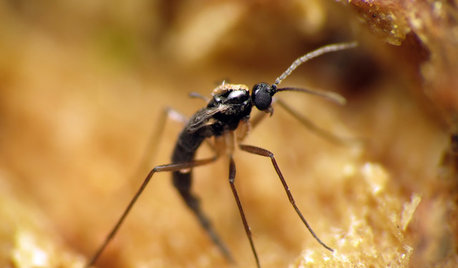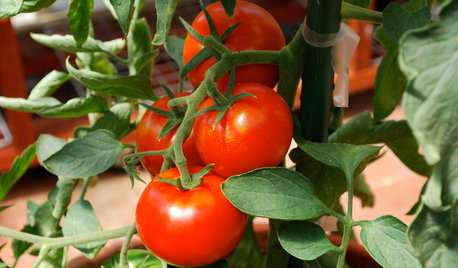fungus gnats
lam702
9 years ago
Related Stories

LIFEHow to Get Rid of Gnats Around the House
See swarming bugs in your plants or garden? Focus on the health of the soil and be naturally pest-free
Full Story
MOST POPULARHow to Get Rid of Those Pesky Summer Fruit Flies
Learn what fruit flies are, how to prevent them and how to get rid of them in your home
Full Story
GARDENING GUIDESCommon Myths That May Be Hurting Your Garden
Discover the truth about fertilizer, soil, staking and more to keep your plants healthy and happy
Full Story
HOUSEPLANTSIndoor Winter Gardens for Cheerier Days
Bring plants inside for drab-days mood boosting — not to mention cleaner indoor air and protection for your greenery
Full Story
HOUZZ TOURSMy Houzz: LEDs and a Living Wall Color a Minimalist Slovakian Home
Thanks to a modern overhaul, this small Central European apartment is now a testament to efficiency and thoughtful design
Full Story
GARDENING 101How to Grow Tomatoes in Pots
Don’t have much space for a garden? All you need is a sunny spot and a large container to grow this favorite summer crop
Full Story
FALL GARDENING5 Ways to Put Fall Leaves to Work in Your Garden
Improve your soil and yard the organic way with a valuable garden booster that grows on trees
Full Story
FALL AND THANKSGIVINGFall Decorating Ideas From a Designer to the Stars
You might think all-out glitz and over-the-top glamour make up Adam Hunter's fall decorations. You'd be wrong
Full StoryMore Discussions










tapla (mid-Michigan, USDA z5b-6a)
rina_Ontario,Canada 5a
Related Professionals
Severn Landscape Architects & Landscape Designers · Willowick Landscape Architects & Landscape Designers · Norwood Landscape Contractors · Brockton Landscape Contractors · Brunswick Landscape Contractors · Eagle Landscape Contractors · Kearny Landscape Contractors · Midland Landscape Contractors · Morrisville Landscape Contractors · West Palm Beach Landscape Contractors · Yuba City Landscape Contractors · Tyngsboro Landscape Contractors · Bel Air North Interior Designers & Decorators · Hagerstown Interior Designers & Decorators · Linton Hall Interior Designers & DecoratorsRioSeven
paul_
ken_adrian Adrian MI cold Z5
Tiffany, purpleinopp Z8b Opp, AL
RioSeven
gardengal48 (PNW Z8/9)
RioSeven
tapla (mid-Michigan, USDA z5b-6a)
RioSeven
tapla (mid-Michigan, USDA z5b-6a)
Tiffany, purpleinopp Z8b Opp, AL
lam702Original Author
teengardener1888
rhizo_1 (North AL) zone 7
Spider_gram
Jasdip
Spider_gram